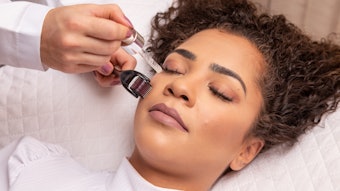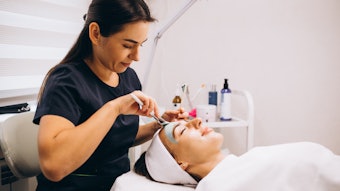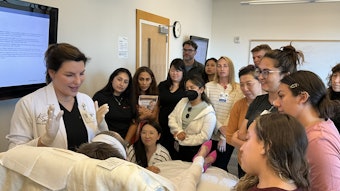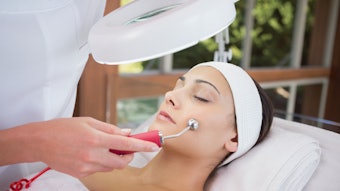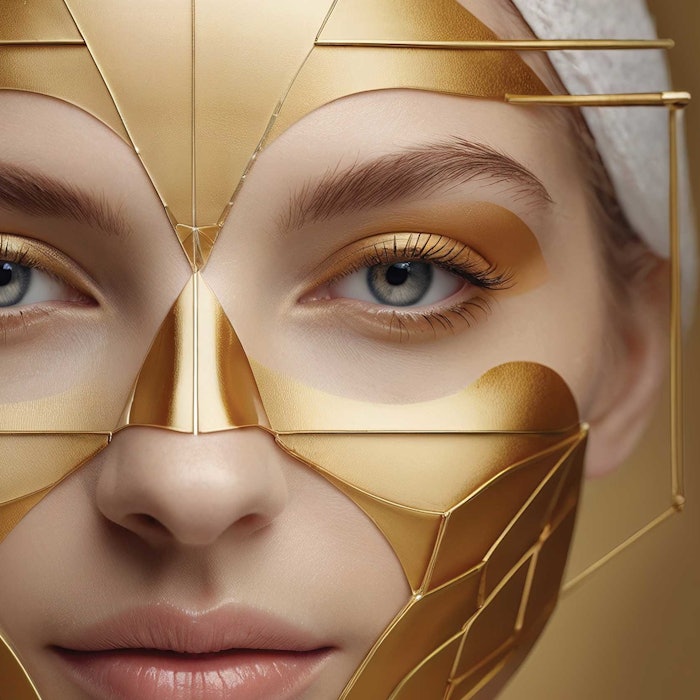
The future of medical aesthetics is poised to revolutionize the way we approach beauty and self-care. As technology advances at an unprecedented pace, emerging aesthetic treatments are reshaping the landscape of cosmetic procedures. From AI-powered diagnostics to sustainable beauty solutions, the aesthetics industry is on the cusp of a transformation that promises to deliver more personalized, effective and environmentally conscious results. To provide a look forward, we've collected the top medical aesthetic trends of 2025.
This article is only available to registered users.
Log In to View the Full Article
The future of medical aesthetics is poised to revolutionize the way we approach beauty and self-care. As technology advances at an unprecedented pace, emerging aesthetic treatments are reshaping the landscape of cosmetic procedures. From AI-powered diagnostics to sustainable beauty solutions, the aesthetics industry is on the cusp of a transformation that promises to deliver more personalized, effective and environmentally conscious results. To provide a look forward, we've collected the top medical aesthetic trends of 2025.
We will delve into the cutting-edge developments and aesthetic technology predictions that are set to define the next generation of skin care and beauty enhancements, exploring the rise of non-invasive procedures, the integration of holistic approaches and the shifting demographics of aesthetic patients. Additionally, we'll examine how digital innovations are influencing aesthetic medicine, the trend towards customized treatments and the growing emphasis on eco-friendly practices. Finally, we'll consider the evolving regulatory landscape and its implications for patient safety in this rapidly changing field.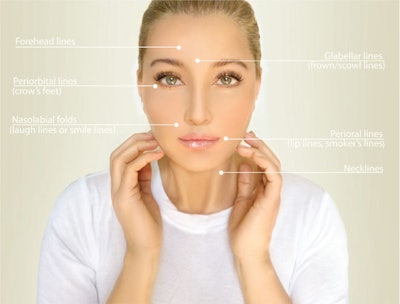 Personalized dermal filler treatments tailored to enhance specific facial featuresImage by Aisylu
Personalized dermal filler treatments tailored to enhance specific facial featuresImage by Aisylu
The Future of Non-Invasive Procedures
The future of non-invasive procedures in medical aesthetics is marked by advancements in injectables, energy-based devices and minimally invasive body contouring techniques. These emerging aesthetic treatments are revolutionizing the way we approach aging and beauty enhancement.
In the realm of injectables, the latest innovations focus on long-lasting, natural-looking results by integrating advanced hyaluronic acid structures that align with facial features [1]. There is a growing trend toward using natural and sustainable materials in dermal fillers, aligning with environmental consciousness and aesthetics [1]. Personalized, bespoke dermal filler treatments are gaining popularity, offering tailored solutions that enhance specific facial features and meet individual beauty goals [1].
Next-generation biostimulatory dermal fillers not only provide immediate results but also stimulate collagen production, ensuring prolonged youthful effects with less frequent touch-ups [1]. Artificial intelligence (AI) is revolutionizing dermal filler procedures by predicting outcomes more accurately, leading to improved techniques, personalized treatment plans and consistent patient satisfaction [1].
Advancements in Injectables & Fillers
Modern injectable treatments, such as hyaluronic acid fillers and injectable biostimulators, have transformed the area of injectable treatments due to advancements in safety [1]. These cutting-edge fillers enhance skin elasticity, add volume to the face and promote the formation of collagen for long-term advantages [1]. Dermal fillers are now multifunctional, efficiently smoothing wrinkles, restoring volume and enhancing facial contours in a single cosmetic procedure [1].
The convenience of reversible dermal fillers has also transformed aesthetic medicine. These fillers, made with substances like hyaluronic acid, can be easily dissolved, offering a safer option for individuals concerned about volume loss [1]. Reversible fillers are popular because they offer convenience and flexibility, allowing patients to address volume loss without making permanent changes [1].
Next-Generation Energy-Based Devices
Energy-based devices are evolving to offer facial rejuvenation with natural-looking results. The new trends focus on advanced regenerative and combination devices with multiple modalities in one device that match the specific shapes of facial structures [1]. Upcoming forecasts suggest these devices will not only add volume but also boost the production of collagen for lasting benefits [1].
Secret DUO by Cutera combines dual non-ablative fractional technologies: Secret RF microneedling paired with a 1540 nm erbium glass laser, in one platform [2]. Each modality can be used individually or in combination for highly effective non-ablative facial rejuvenation [2]. This device is used for building collagen, reversing signs of aging and even helping with remodeling scars [2].
Minimally Invasive Body Contouring Techniques
In the field of body contouring, non-invasive techniques are gaining popularity as alternatives to traditional surgeries. CoolSculpting was one of the first treatments that launched non-invasive body contouring techniques, a non-invasive treatment that uses cryolipolysis to freeze and eliminate fat cells, offers a way to achieve a slimmer, more sculpted physique without the need for surgery [3]. Patients can see results in as little as three weeks, with full results appearing after two to three months [3].
Radiofrequency treatments have also revolutionized post-fat removal care by primarily focusing on skin tightening [4]. After losing weight or removing fat, skin can sometimes appear loose or saggy. Radiofrequency technology uses energy waves to heat deep layers of skin, promoting new collagen production and improving skin tightness and texture after treatment sessions [4].
Emerging Alternatives to Traditional Surgeries
As technology advances, emerging alternatives to traditional surgeries are becoming more prevalent in the aesthetics industry. Laser therapy presents another option for dealing with unwanted fat and obesity issues without requiring surgery [4]. It targets fatty acids within cells through precise beams of light, causing them to break down [4]. The benefits of recent laser devices, such as Aerolase's Neo Elite, include minimal discomfort and minimal to no downtime requirement for recovery compared to the downtime typically required after surgical procedures [4].
High-intensity focused ultrasound (HIFU) is another non-surgical alternative gaining popularity. HIFU delivers energy precisely, targeting specific areas for non-surgical facelifts [4]. Unlike traditional methods, HIFU does not harm the skin's surface, allowing plastic surgeons to focus energy on just the right spots without the need to make incisions or use needles [4]. Patients can expect fewer side effects and a quick return to daily activities [4].
The future of medical aesthetics is poised to offer patients a wide range of non-invasive options for achieving their desired results. As aesthetic technology continues to evolve, personalized aesthetics, AI in beauty, sustainable aesthetics and next-generation skin care formulations will shape the landscape of the aesthetics industry. These beauty tech innovations and emerging aesthetic treatments promise to deliver more effective, convenient and environmentally conscious solutions for those seeking to enhance their appearance without the need for surgery.
Holistic Approach to Aesthetic Treatments
The future of medical aesthetics is embracing a holistic approach that integrates aesthetic treatments with overall wellness for optimal results. This comprehensive perspective considers the patient's physical, mental and emotional well-being, recognizing that true beauty radiates from within. By addressing the root causes of skin concerns and promoting healthy lifestyle habits, aesthetic practitioners can enhance treatment outcomes and foster long-lasting, natural-looking results.
Integration with Overall Wellness
Integrating aesthetic treatments with overall wellness is a key trend shaping the future of the industry. Aesthetic practitioners are increasingly collaborating with nutritionists, fitness experts and mental health professionals to develop personalized treatment plans that address both external and internal factors contributing to skin health and aging. This multidisciplinary approach recognizes the interconnectedness of diet, exercise, stress management and skin care in achieving optimal results [5].
Combination of Surgical and Non-Surgical Procedures
The holistic approach to aesthetics also involves strategically combining surgical and non-surgical procedures to achieve patients' desired outcome while minimizing invasiveness and downtime. For example, a patient may undergo a surgical facelift to address significant sagging, followed by non-surgical treatments like dermal fillers and laser resurfacing to refine the results and maintain a youthful appearance over time [6] [7]. This combination approach allows for a more natural, gradual enhancement that aligns with the patient's individual needs and goals.
Focus on Skin Health & Regenerative Aesthetics
With a holistic approach to aesthetics, skin health and regenerative aesthetics take center stage. Rather than solely focusing on correcting specific concerns, aesthetic practitioners prioritize improving the overall quality and function of the skin. This involves using advanced skin care products and treatments that stimulate collagen production, enhance cellular turnover and protect against environmental stressors [8]. By optimizing skin health from within, patients can achieve a more radiant, youthful complexion that lasts.
Psychological Benefits of Aesthetic Treatments
The psychological benefits of aesthetic treatments are an integral part of a holistic approach to medical aesthetics. Studies have shown that improving one's appearance can lead to increased self-confidence, reduced anxiety and enhanced social interactions [9] [10]. Aesthetic practitioners who adopt a holistic perspective understand the profound impact their treatments can have on a patient's mental well-being and tailor their approach accordingly. By creating a supportive, nurturing environment and addressing each patient's unique concerns and goals, they can help patients feel more confident and empowered in their own skin.
As the aesthetic industry continues to evolve, the holistic approach to beauty is poised to become the new standard of care. By integrating aesthetic treatments with overall wellness, combining surgical and non-surgical procedures, focusing on skin health and regenerative treatments and recognizing the psychological benefits of aesthetic enhancements, practitioners can deliver transformative results that enhance patients' quality of life from the inside out.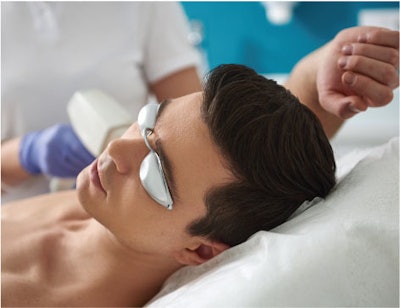 Increasing number of male patients seeking cosmetic treatments.Image by Yakobchuk Olena at Adobe Stock
Increasing number of male patients seeking cosmetic treatments.Image by Yakobchuk Olena at Adobe Stock
Changing Demographics of Aesthetic Patients
The aesthetics industry is witnessing a significant shift in patient demographics, with younger generations increasingly seeking cosmetic treatments. This trend is driven by a desire to maintain a youthful appearance and prevent signs of aging before they become visible. The concept of prejuvenation, which involves taking proactive measures to slow down the aging process, is gaining popularity among millennials and Gen Z.
Increase in Younger Patients
Aesthetic practices are seeing a notable rise in patients in their 20s and 30s who are interested in non-invasive and minimally invasive procedures. These younger patients are focusing on preventative treatments to maintain their skin's health and appearance. Injectables such as neurotoxins and dermal fillers are particularly popular among this age group, as they offer subtle enhancements without the need for surgery or extensive downtime [2].
Rise of Male Clientele
Another significant change in the aesthetic patient population is the growing number of men seeking cosmetic treatments. Men are becoming more open to the idea of aesthetic enhancements and are increasingly investing in their appearance. Procedures such as neurotoxin injections, dermal fillers and body contouring are gaining popularity among male patients who want to look and feel their best [2].
Expansion of Treatments for Diverse Ethnicities
As the aesthetics industry evolves, there is a growing recognition of the need for personalized treatments that cater to the unique needs and preferences of diverse ethnicities. Aesthetic practitioners are expanding their expertise to address the specific concerns of patients with different skin types and facial features, as well as the differences in how different ethnic phenotypes age. This includes developing specialized techniques and products that are tailored to the unique characteristics of various ethnic groups, ensuring optimal results and patient satisfaction.
Prejuvenation Trends
Prejuvenation, the proactive approach to preventing signs of aging, is a major trend among younger aesthetic patients. This involves adopting a comprehensive skin care regimen, protecting the skin from sun damage and incorporating non-invasive treatments such as chemical peels, microneedling and laser resurfacing into their routine. By taking preventative measures early on, patients aim to maintain a youthful appearance and delay the need for more invasive procedures later in life.
As the aesthetics industry continues to evolve, it is crucial for practitioners to stay attuned to the changing demographics and preferences of their patients. By offering a wide range of personalized treatments and embracing the concept of prejuvenation, aesthetics professionals can meet the growing demand for natural-looking, age-defying results among a diverse patient population.
Aesthetic Medicine in the Digital Age
The rapid evolution of digital technologies is transforming aesthetic medicine, offering practitioners innovative tools to enhance patient care and streamline practice management. Telemedicine platforms have emerged as a game-changer, enabling virtual consultations that provide convenience and accessibility for patients while maintaining the personalized touch of face-to-face interactions [11]. These platforms seamlessly integrate with existing practice management systems, allowing for efficient scheduling, secure data storage and seamless communication between practitioners and patients.
Artificial intelligence (AI) is another groundbreaking technology reshaping the future of medical aesthetics. AI-powered treatment planning software analyzes patient data, including skin type, age and treatment history, to generate personalized recommendations and predict outcomes [12]. This technology empowers practitioners to make data-driven decisions, optimizing results and minimizing risks. Furthermore, AI algorithms can process vast amounts of data from clinical studies and real-world evidence, continuously learning and refining treatment protocols to stay at the forefront of emerging aesthetic treatments.
Virtual and augmented reality (VR/AR) technologies are revolutionizing patient education and informed consent processes. Immersive VR simulations allow patients to visualize potential treatment outcomes, enhancing their understanding of procedures and setting realistic expectations [13]. AR applications overlay digital information onto the patient's skin, providing real-time guidance for practitioners during treatments, improving precision and consistency. These cutting-edge technologies not only elevate the patient experience but also serve as powerful marketing tools, showcasing a practice's commitment to innovation and patient-centric care.
Online platforms for practitioner-patient communication are essential components of the digital transformation in aesthetic medicine. Secure messaging systems facilitate ongoing dialog between appointments, allowing patients to ask questions, report concerns and receive timely support [14]. These platforms also enable practitioners to send personalized treatment reminders, aftercare instructions and educational materials, fostering patient engagement and adherence to treatment plans. By leveraging digital communication tools, aesthetic practices can build stronger relationships with their patients, leading to increased satisfaction and loyalty.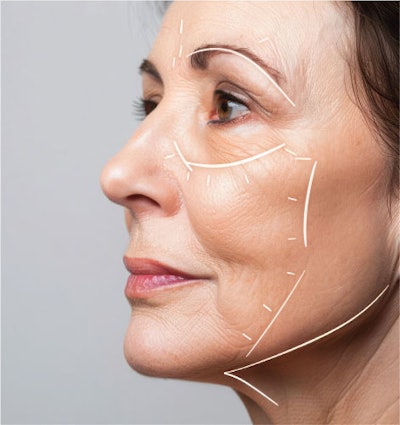 AI will make increasingly precise, individually tailored treatments the norm.Image by DK_2020 at Adobe Stock
AI will make increasingly precise, individually tailored treatments the norm.Image by DK_2020 at Adobe Stock
As the aesthetics industry embraces the digital age, practitioners who adopt these transformative technologies will be well-positioned to thrive in an increasingly competitive landscape. By harnessing the power of telemedicine, AI, VR/AR and online communication platforms, medical aesthetics professionals can deliver exceptional, personalized care that meets the evolving needs and expectations of their patients. The future of medical aesthetics lies in the seamless integration of cutting-edge digital technologies with the artistry and expertise of skilled practitioners, ushering in a new era of precision, efficiency and patient-centric care.
Personalization & Customization in Aesthetics
The emerging aesthetic treatments in the future of medical aesthetics will increasingly focus on personalization and customization. Tailored treatment plans will become the norm, taking into account each patient's unique skin type, concerns and aesthetic goals. Aesthetic practitioners will leverage advanced diagnostic tools and AI algorithms to analyze skin at a cellular level, identifying specific areas that require targeted interventions [12].
Genetic and biomarker-based approaches will play a significant role in personalized aesthetics. By understanding an individual's genetic predispositions and specific biomarkers, aesthetic professionals can develop highly targeted treatments that address the root causes of skin aging and other concerns [5]. This precise approach will lead to more effective outcomes and higher patient satisfaction.
3D printing technology will revolutionize the field of aesthetic medicine, enabling the creation of custom implants and prosthetics that perfectly match a patient's anatomy [13]. From facial implants to breast reconstruction, 3D-printed solutions are designed to offer unparalleled precision and natural-looking results. This personalized approach will minimize complications and recovery time while maximizing patient comfort and satisfaction.
Personalized skin care regimens will become increasingly sophisticated, thanks to advancements in AI and data analytics. By analyzing a patient's skin microbiome, lifestyle factors and environmental exposures, aesthetic practitioners will be able to create bespoke skin care routines that optimize skin health and prevent premature aging [8]. These next-generation skin care solutions will be tailored to each individual's unique needs, ensuring maximum efficacy and long-lasting results.
Sustainability & Eco-Friendly Practices in Aesthetics
The future of medical aesthetics is increasingly focused on sustainability and eco-friendly practices. As consumers become more environmentally conscious, they are seeking out aesthetic treatments and products that align with their values. Aesthetic practices and product manufacturers are responding by adopting biodegradable and eco-friendly product development, sustainable practices in clinics and medspas, ethical sourcing of ingredients and reducing the environmental impact of treatments.
Biodegradable and eco-friendly product development is a key trend in the aesthetics industry. Companies are investing in research to create products that are not only effective but also have a minimal impact on the environment. This includes using sustainable packaging materials, such as recycled plastics or biodegradable options, and formulating products with natural, organic and ethically sourced ingredients [12].
Aesthetic clinics and medspas are also implementing sustainable practices to reduce their carbon footprint and appeal to eco-conscious patients. This can involve using energy-efficient equipment, reducing water consumption and properly disposing of medical waste. Some practices are even incorporating renewable energy sources, such as solar panels, to power their facilities [15].
Ethical sourcing of ingredients is another critical aspect of sustainability in the aesthetics industry. Consumers are demanding transparency in the supply chain, ensuring that ingredients are obtained in a responsible and ethical manner. This includes sourcing from suppliers who adhere to fair labor practices, support local communities and minimize their environmental impact [16].
Reducing the environmental impact of treatments is an ongoing challenge in the aesthetic industry. However, advancements in technology are enabling more efficient and eco-friendly procedures. For example, the development of energy-efficient lasers and light-based devices can reduce power consumption during treatments. Additionally, the use of biodegradable or reusable materials, such as patient drapes and supplies, can significantly decrease waste generation [11].
As the aesthetics industry continues to evolve, sustainability and eco-friendly practices will become increasingly important. By embracing these values and implementing environmentally responsible solutions, aesthetic professionals can not only contribute to a greener future but also attract a growing segment of consumers who prioritize sustainability in their personal care choices. The integration of eco-friendly practices into the future of medical aesthetics is a win-win scenario, benefitting both the environment and the long-term success of the industry.
Regulatory Landscape & Safety Considerations
The future of medical aesthetics is increasingly shaped by the evolving regulatory landscape and safety considerations. As emerging aesthetic treatments and personalized aesthetics gain popularity, regulatory bodies are taking steps to ensure patient safety and establish clear guidelines for practitioners. In different regions, regulations are adapting to address the unique challenges posed by AI in beauty, sustainable aesthetics and next-generation skin care formulations [9].
The importance of practitioner training and certification cannot be overstated in the context of the future of medical aesthetics. As beauty tech innovations continue to advance, it is crucial that aesthetic providers possess the necessary skills and knowledge to safely and effectively administer treatments. Rigorous training programs and certification requirements help to ensure that practitioners meet the highest standards of competence and professionalism [10].
Patient safety protocols are at the forefront of the aesthetics industry's priorities. As the demand for preventative and age-defying treatments and personalized aesthetics grows, it is essential to implement robust safety measures to minimize risks and adverse events. This includes thorough patient screening, informed consent processes and adherence to evidence-based practices. Aesthetic technology predictions underscore the need for ongoing research and monitoring to identify and mitigate potential safety concerns [10].
The ethical use of new technologies, such as AI in beauty and personalized aesthetics, is a critical consideration in the future of medical aesthetics. As these technologies become more sophisticated and widely adopted, it is important to ensure that they are used responsibly and in the best interests of patients. This involves addressing issues of privacy, data security and potential biases in AI algorithms [9]. By prioritizing ethical considerations, the aesthetics industry can foster trust and confidence among patients and stakeholders.
Final Thoughts
The future of medical aesthetics is set to transform the beauty and self-care industry. From AI-powered diagnostics to sustainable solutions, the aesthetics field is on the brink of a revolution that promises more personalized, effective and environmentally conscious results. The integration of cutting-edge technologies with holistic approaches and the changing demographics of aesthetic patients are shaping a new landscape where innovation meets individual needs.
As we look ahead, the aesthetics industry faces both exciting opportunities and important challenges. The emphasis on personalization, sustainability and safety will continue to drive advancements in treatments and practices. At the same time, the evolving regulatory landscape will play a crucial role to ensure patient well-being and ethical use of new technologies. These developments pave the way for a future where aesthetic medicine not only enhances physical appearance but also contributes to overall wellness and self-confidence.
References
[1] - https://www.socalaestheticsurgery.com/blog/dermal-filler-innovations
[2] - https://www.theaestheticguide.com/esthetic-guide/energy-based-devices-mainstays-esthetic-practices
[3] - https://www.plasticsurgery.org/news/articles/shaping-tomorrow-the-boom-in-noninvasive-body-contouring-and-laser-procedures
[4] - https://www.brazilianbuttlift.com/blog/the-future-of-ultrasound-liposuction/
[5] - https://www.hamiltonfraser.co.uk/content-hub/integrating-wellness-and-a-holistic-approach-into-your-esthetic-practice
[6] - https://www.plasticsurgery.org/news/blog/combining-plastic-surgery-with-nonsurgical-treatments
[7] - https://www.normanpastorekmd.com/blog/combining-facial-plastic-surgery-nonsurgical-treatments-for-enhanced-results
[8] - https://www.floridamedicalclinic.com/blog/skincare-esthetic/
[9] - https://www.ncbi.nlm.nih.gov/pmc/articles/PMC8081460/
[10] - https://glowdermspa.com/wellness/the-psychology-of-beauty-how-esthetic-treatments-enhance-mental-well-being/
[11] - https://www.drronaldespinoza.com/blog/as-of-2024-what-new-liposuction-body-contouring-procedures-may-have-emerged/
[12] - https://www.koleplasticsurgery.com/popular-non-surgical-plastic-cosmetic-surgery-alternatives/
[13] - https://www.puremedicalspa.us/non-invasive-cosmetic-procedures-alternatives-to-plastic-surgery/
[14] - https://www.plasticsurgery.org/news/articles/minimally-invasive-procedures-what-to-know-and-where-to-start
[15] - https://drsanjaylalla.com/blog/body-contouring-popularity/
[16] - https://www.futurebridge.com/industry/perspectives-life-sciences/non-invasive-techniques-in-esthetics/





